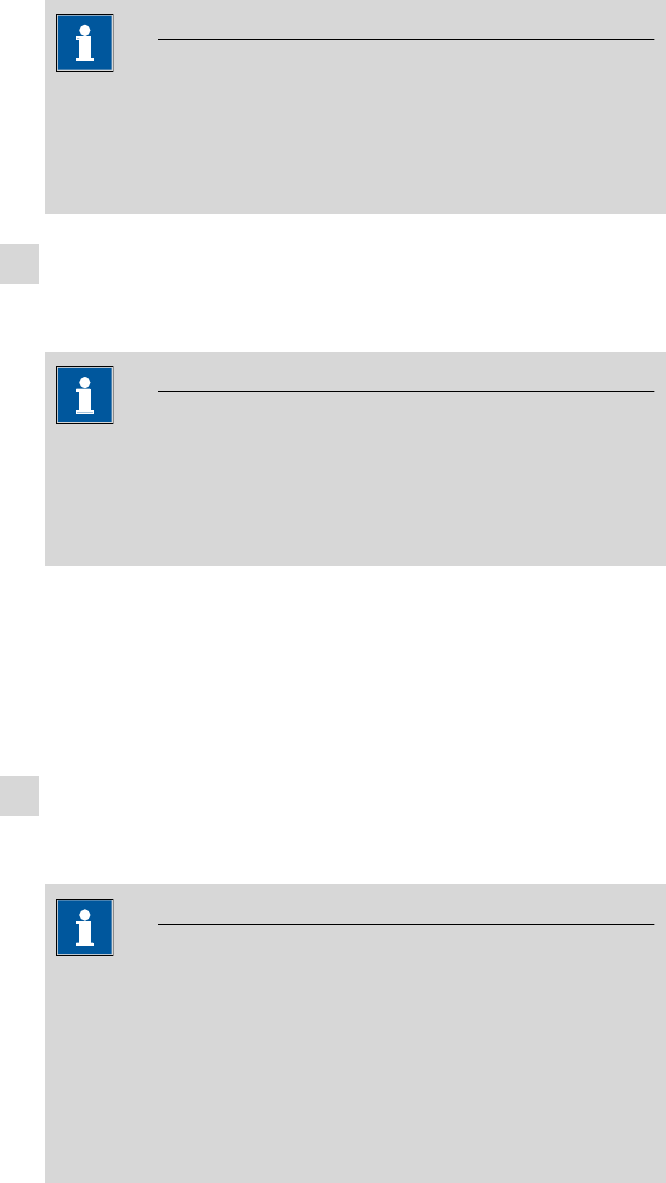Owner's manual
Table Of Contents
- Table of contents
- Table of figures
- 1 Introduction
- 2 Overview of the instrument
- 3 Installation
- 4 Operation
- 4.1 Fundamentals of operation
- 4.2 Instrument and Program Settings
- 4.3 Program information
- 4.4 Calibration functions
- 4.5 Methods
- 4.6 Determinations
- 4.6.1 Preparing samples
- 4.6.2 Preparing the instrument and the accessories
- 4.6.3 Preparing the determination
- 4.6.4 Starting the determination
- 4.6.5 Cleaning the instrument and accessories
- 4.6.6 Adjusting the method parameters during the determination
- 4.6.7 Stopping the determination manually
- 4.6.8 Status of the live curve
- 4.7 Results
- 4.8 GLP functions
- 5 Handling and maintenance
- 6 Troubleshooting
- 7 Technical specifications
- 8 Conformity and warranty
- 9 Accessories
- Index

4.6 Determinations
■■■■■■■■■■■■■■■■■■■■■■
78
■■■■■■■■
743 Rancimat
Note
If the folded filter becomes blocked (e.g. due to the consistency of
the sample material), a Soxhlet apparatus should be used for solid/
liquid separation. You can use up to 40 g of sample material here
per approach.
3
Distillation and filtration
■ Distill the petroleum ether from the clear, perhaps slightly yellow
extract.
Note
It is safest and easiest if you do this in a rotation evaporator; in a
slight vacuum and at a temperature of +30...35 °C the petroleum
ether can gently and efficiently be removed, protected from direct
light (cover the water bath e.g. with aluminum foil).
■ Dry the oil/fat sample obtained after completing the distillation:
during around 30 min at a pressure of p < 1330 Pa (13.3 mbar).
■ Filter the oil/fat sample now present together with Na
2
SO
4
water-free over a folded filter. If necessary, work in the drying
oven at a temperature exceeding the melting point of this fat by
10 °C.
4
Further sample preparation
■ Treat the isolated oil/fat samples afterwards just as pure oils and
fats.
Note
If the isolated oil/fat samples are not immediately measured out,
you have to store the samples in a cool place and protected
from light; for storing the samples, they should be covered over
in their vessels with a nitrogen layer. This type of storage does not
provide complete protection against unintended and uncontrolled
changes in the oxidation stability, but represents a usable preserva-
tion in many cases.
You can find further information on the treatment of oil and fat samples
in Rancidity in Foods, Allen J.C., Hamilton R.J., Applied Science Publish-
ers, London and New York, 1983.










